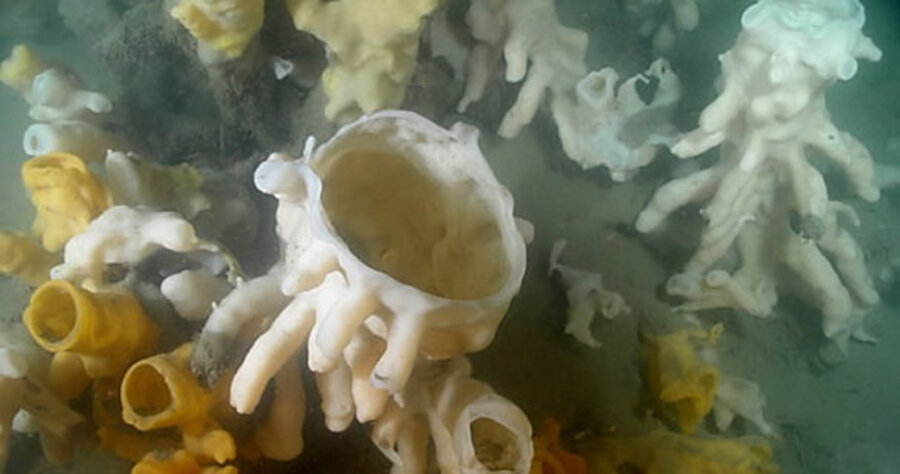Glass ‘cities’ under the sea
Loading...
Imagine living in a city made of glass. No, this isn’t a fairy tale. If you could grab your diving gear and swim down 650 feet into the Pacific Ocean off the coast of Washington State, you would witness the secret world of glass reefs.
The reef you’d be looking at is made up of glass sponges. But how can animals be made of glass? Well, glass is formed from a substance called silica. The sponges use the silica found in ocean waters to build glass skeletons that will give them shape and support. Be careful! Some of the fragile creatures are up to 200 years old.
When sponges die, new ones grow on top of the pile of old ones. Over centuries, a massive and complex reef takes shape. Some sponges look like wrinkled trumpets, while others look like overgrown cauliflower or mushrooms.
Dr. Paul Johnson, who discovered the Washington reef in 2007, also found other surprises such as bubbles of methane gas seeping out of the seafloor nearby. The methane feeds strands of bacteria, and the bacteria feed the glass sponges.
“It’s a new ecosystem we know nothing about,” said Dr. Johnson.
The reef of yellow and orange glass sponges is crowded with crabs, shrimp, starfish, worms, snails, and rockfish. The glass reef is also a nursery for the babies of many of these creatures and was nicknamed a “kindergarten” by scientists.
Many animals that live in the reef hang around for a long time, just like the sponges. Rockfish, for example, live for more than 100 years. Scientists are just beginning to study all the species that call the reef home.
Glass cities of the past
The Washington coast isn’t the only place where a living glass reef has been found. The first was discovered in Hecate Strait off the coast of British Columbia in 1991. Scientists all over the world were stunned to see it. Reefs like these two are commonly found in fossils but were thought to have become extinct more than 100 million years ago.
Scientists don’t know for sure but think that back then, algae called diatoms may have used up a lot of silica to build their own cell walls. But it turns out that when the sponges couldn’t find silica close to the surface, they just went deeper. Here, it was too dark for diatoms, but not so deep that the sponges would lack oxygen.
The age of the reefs near Washington isn’t yet known. But glass sponge reefs are very slow growing and can continue building for a long time. The large glass reefs discovered in Hecate Strait are about 9,000 years old. A smaller glass reef was found in British Columbia’s Strait of Georgia in 2005.
To locate the reef near Washington, Dr. Johnson said, “We sampled the ocean floor using echo-sounders. No sponge was found. Then we saw a group of long-line fishing boats. Fishing boats meant fishes were hanging around the spot, in the otherwise barren stretch of ocean. It had to be sponges – reef!”
The future of glass reefs
While researchers are starting to map the glass reefs, they are also sadly charting their destruction. Although the fishing boats helped scientists locate the reefs, fishing is also why the reefs may be in danger. A method of fishing called trawling – where a net is pulled along the ocean floor grabbing everything in its path – has damaged the glass sponges.
Trawling is banned around the Canadian reefs. Some protections exist for the one in US waters, too, but they haven’t been made permanent. So it’s a good thing scientists such as Dr. Johnson are studying the significance of glass reefs to the marine world and working to learn how important it is to preserve these delicate ecosystems.





